This month sees the following articles in MedChemComm that are in the top ten most accessed:
Minisci reactions: Versatile CH-functionalizations for medicinal chemists
Matthew A. J. Duncton
Med. Chem. Commun., 2011, 2, 1135-1161
DOI: 10.1039/C1MD00134E
Towards biocompatible nanovalves based on mesoporous silica nanoparticles
Ying-Wei Yang
Med. Chem. Commun., 2011, 2, 1033-1049
DOI: 10.1039/C1MD00158B
Development of second generation epigenetic agents
Philip Jones
Med. Chem. Commun., 2012, Advance Article
DOI: 10.1039/C1MD00199J
Small molecules DNA methyltransferases inhibitors
Nadine Martinet, Benoît Y. Michel, Philippe Bertrand and Rachid Benhida
Med. Chem. Commun., 2011, Advance Article
DOI: 10.1039/C1MD00194A
Molecular obesity, potency and other addictions in drug discovery
Michael M. Hann
Med. Chem. Commun., 2011, 2, 349-355
DOI: 10.1039/C1MD00017A
Epigenetics — an emerging and highly promising source of new drug targets
Nessa Carey
Med. Chem. Commun., 2012, Advance Article
DOI: 10.1039/C1MD00264C
Synthesis of hybrid 4-anilinoquinoline triazines as potent antimalarial agents, their in silico modeling and bioevaluation as Plasmodium falciparum transketolase and ß-hematin inhibitors
Moni Sharma, Kuldeep Chauhan, Shikha S. Chauhan, Ashok Kumar, Shiv Vardan Singh, Jitendra K. Saxena, Pooja Agarwal, Kumkum Srivastava, S. Raja Kumar, Sunil K. Puri, Priyanka Shah, M. I. Siddiqi and Prem M. S. Chauhan
Med. Chem. Commun., 2012, 3, 71-79
DOI: 10.1039/C1MD00188D
Synthesis, thiol-mediated reactive oxygen species generation profiles and anti-proliferative activities of 2,3-epoxy-1,4-naphthoquinones
Allimuthu T. Dharmaraja, Tapan K. Dash, V. Badireenath Konkimalla and Harinath Chakrapani
Med. Chem. Commun., 2012, Advance Article
DOI: 10.1039/C1MD00234A
Inhibition of bromodomain-mediated protein—protein interactions as a novel therapeutic strategy
Silviya D. Furdas, Luca Carlino, Wolfgang Sippl and Manfred Jung
Med. Chem. Commun., 2012, Advance Article
DOI: 10.1039/C1MD00201E
2-Anilinonicotinyl linked 1,3,4-oxadiazole derivatives: Synthesis, antitumour activity and inhibition of tubulin polymerization
Ahmed Kamal, Y. V. V. Srikanth, Thokhir B. Shaik, M. Naseer A. Khan, Md. Ashraf, M. Kashi Reddy, K. Anil Kumar and Shasi V. Kalivendi
Med. Chem. Commun., 2011, 2, 819-823
DOI: 10.1039/C0MD00177E
Why not take a look at the articles today and blog your thoughts and comments below.
Fancy submitting an article to MedChemComm? Then why not submit to us today or alternatively email us your suggestions.
Comments Off on Top ten most accessed articles in November
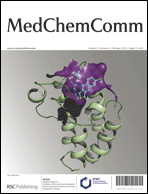











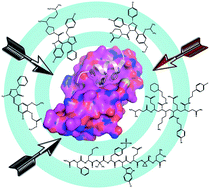
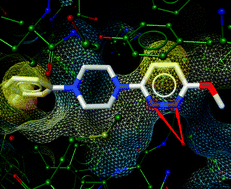 Expanding the horizon of chemotherapeutic targets: From MDM2 to MDMX (MDM4)
Expanding the horizon of chemotherapeutic targets: From MDM2 to MDMX (MDM4)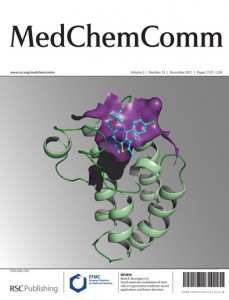
 Kenward Vong and
Kenward Vong and 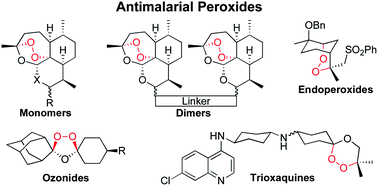
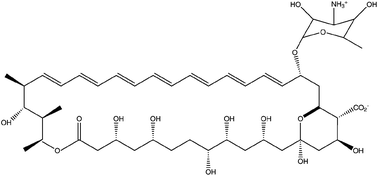
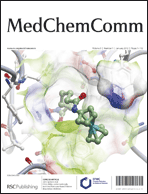 On the cover of this issue is work by John Spencer et al. on the synthesis of a small library of ferrocene-based HDAC inhibitors via click chemistry – click JAHAs. This article is from our forthcoming web collection on
On the cover of this issue is work by John Spencer et al. on the synthesis of a small library of ferrocene-based HDAC inhibitors via click chemistry – click JAHAs. This article is from our forthcoming web collection on 
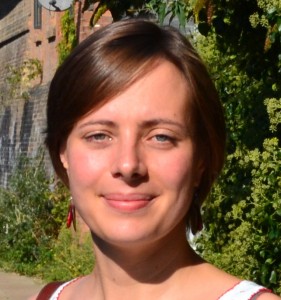
![Rich_med_tcm18-153780[1]](https://blogs.rsc.org/md/files/2012/01/Rich_med_tcm18-1537801.jpg)